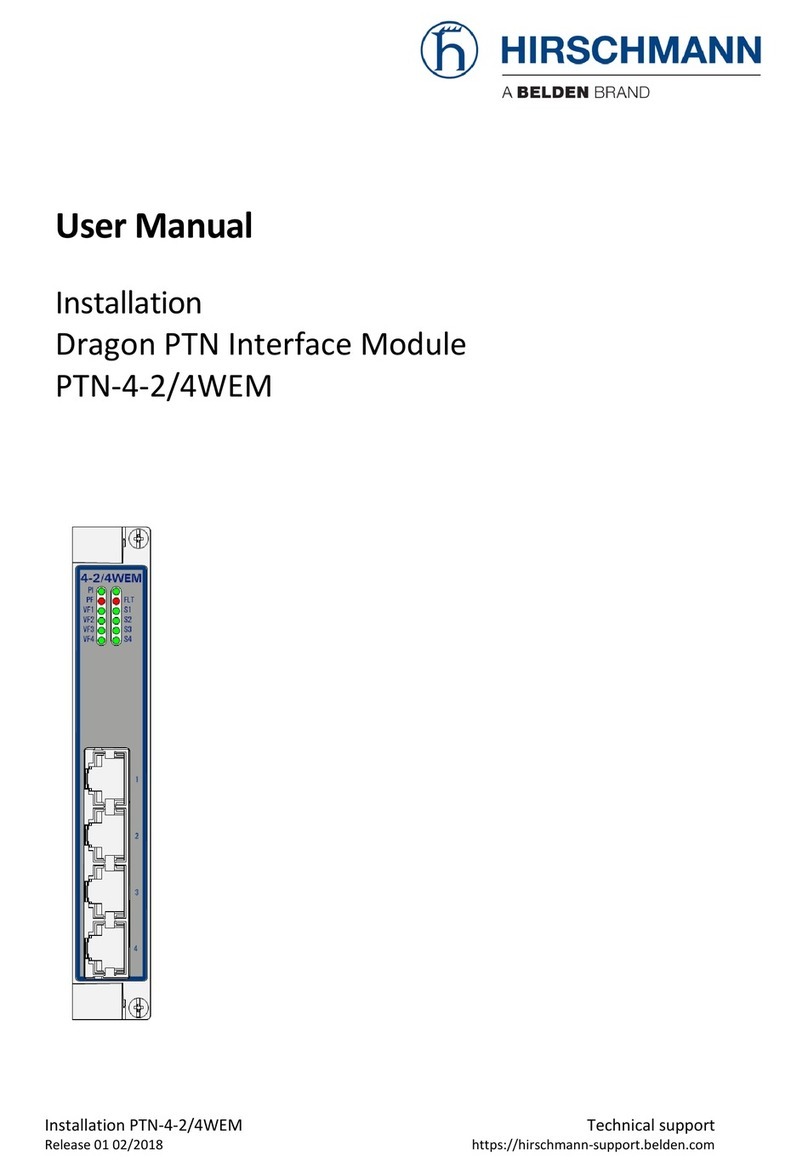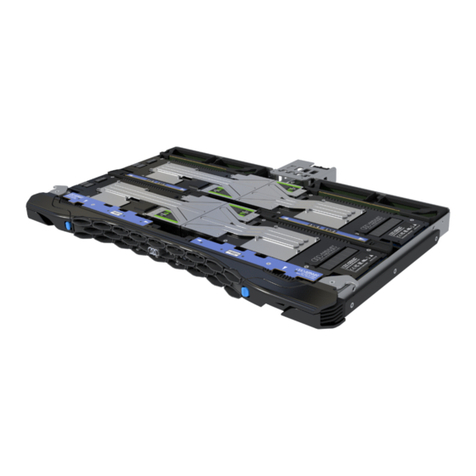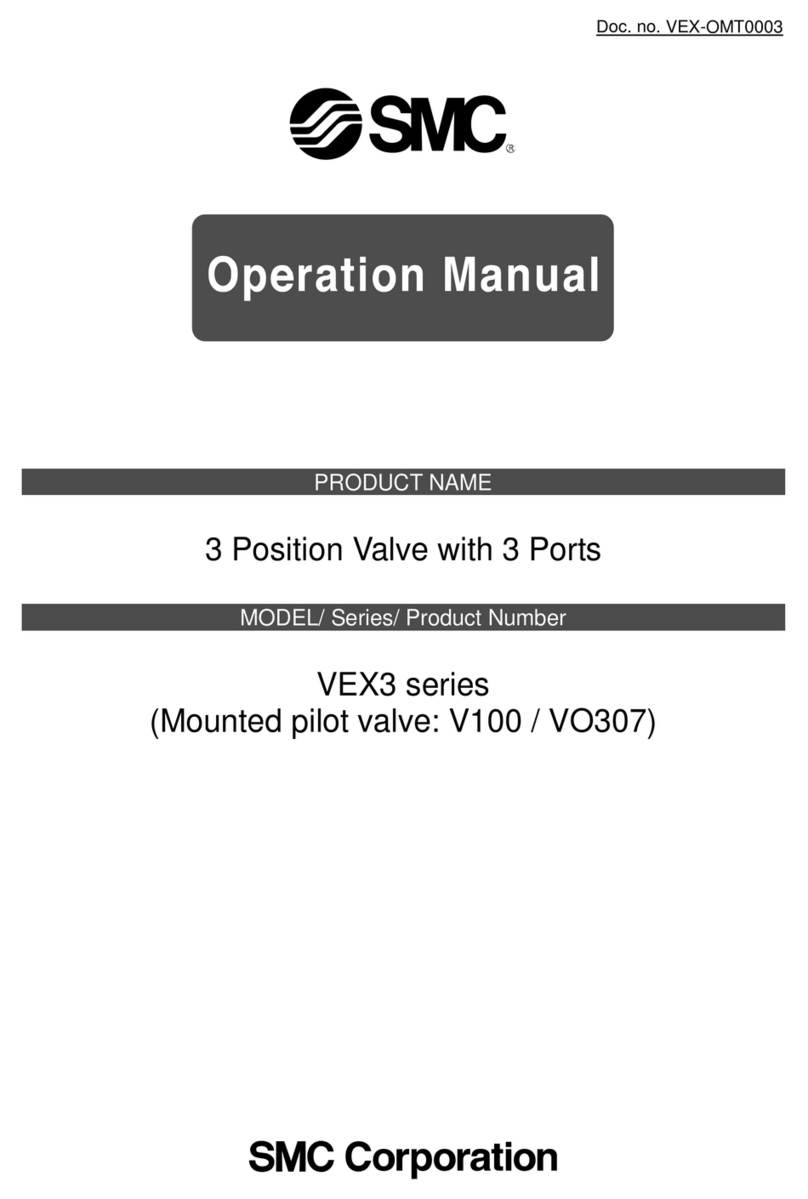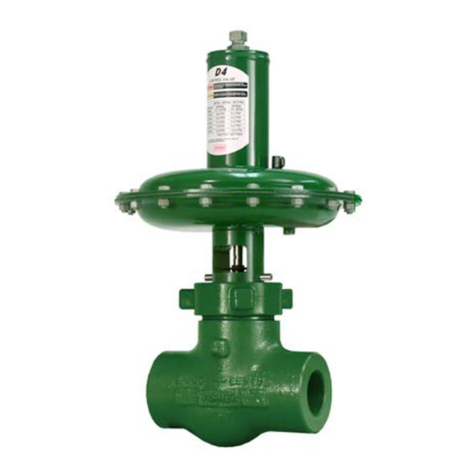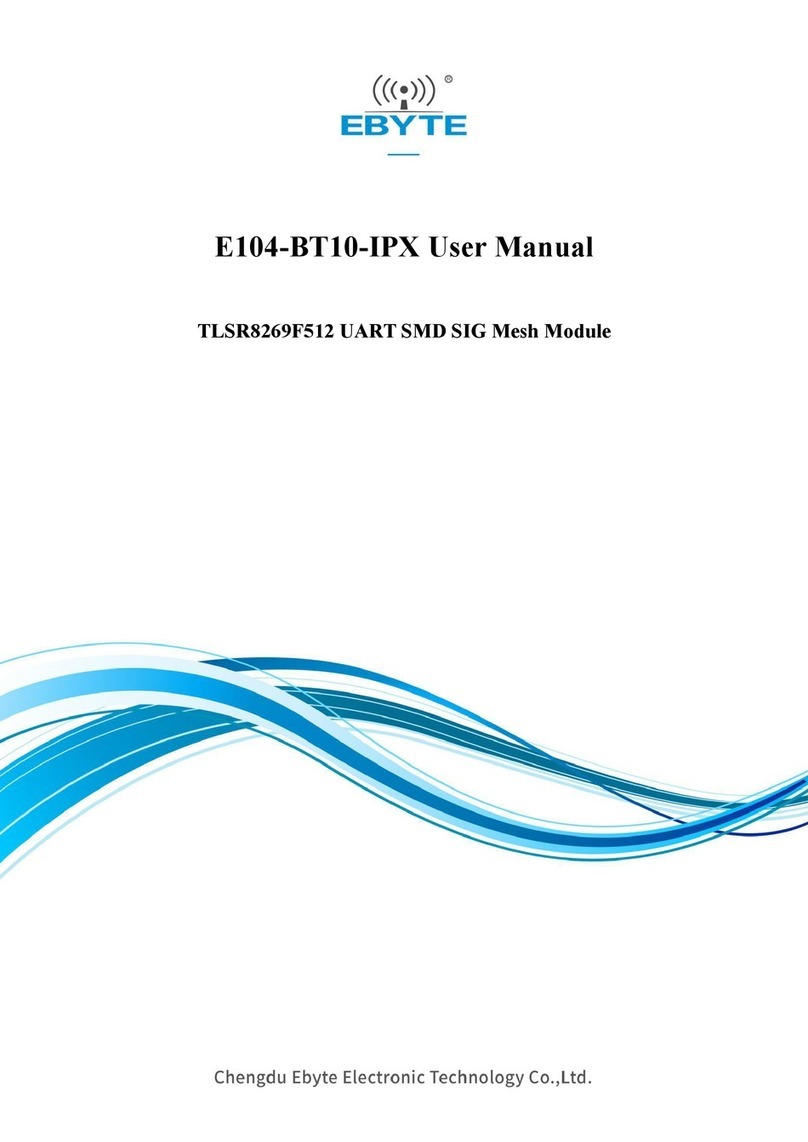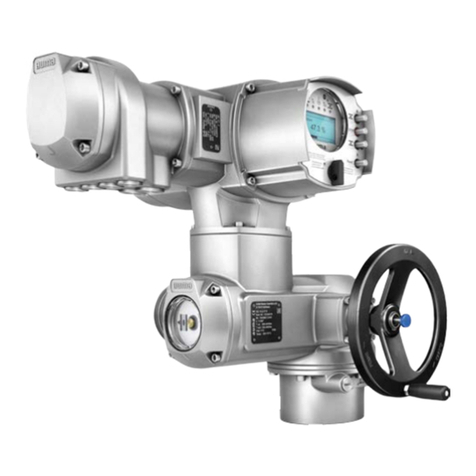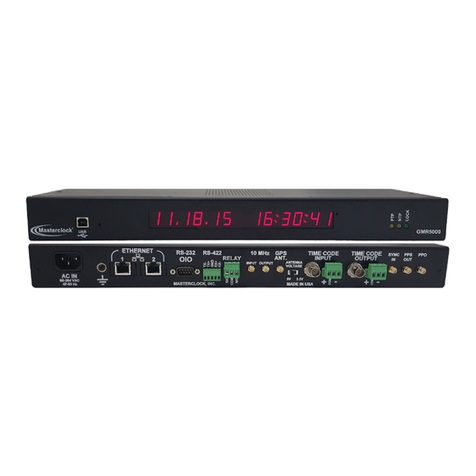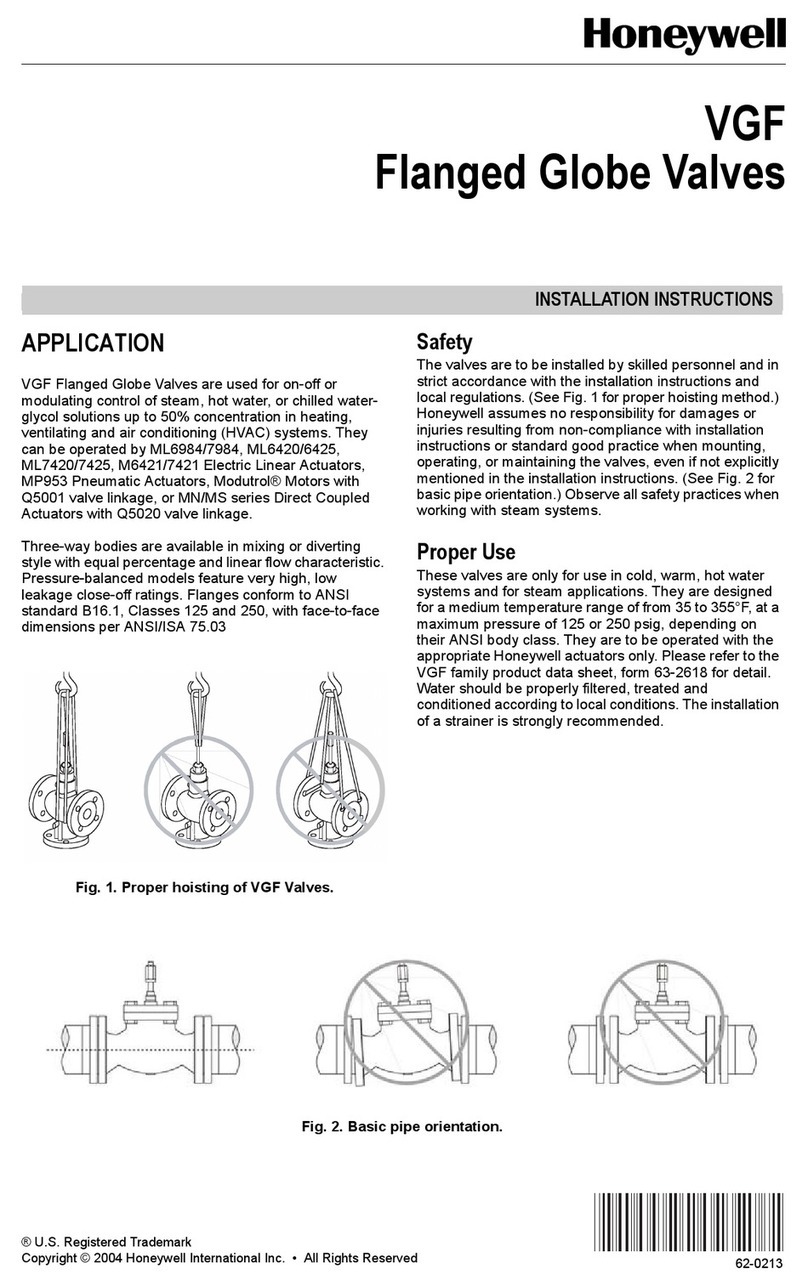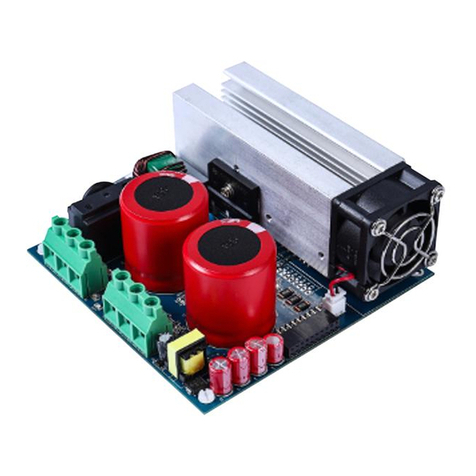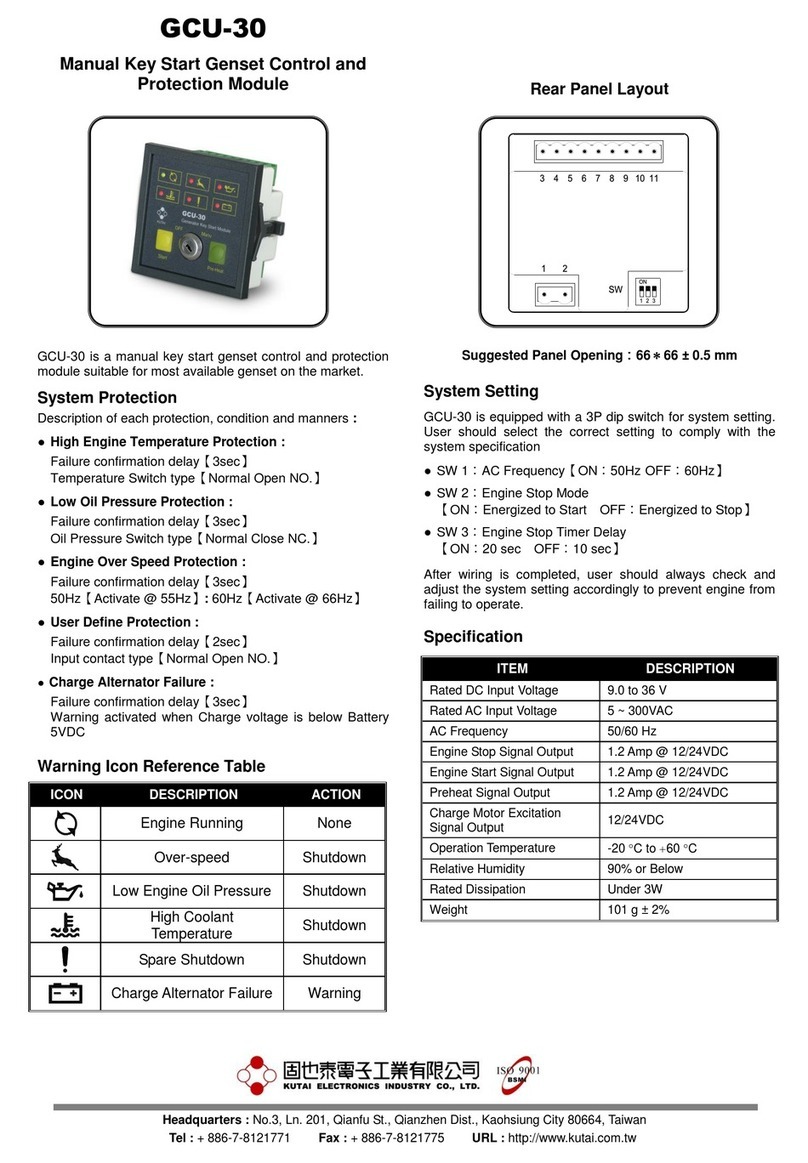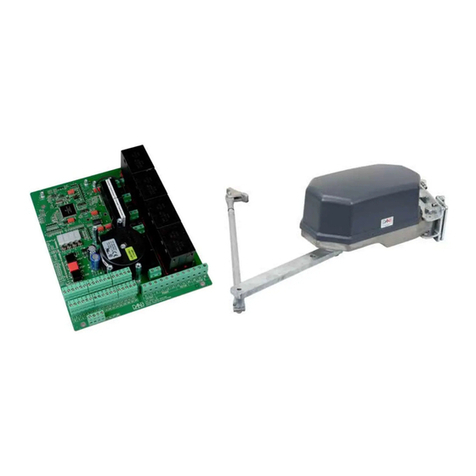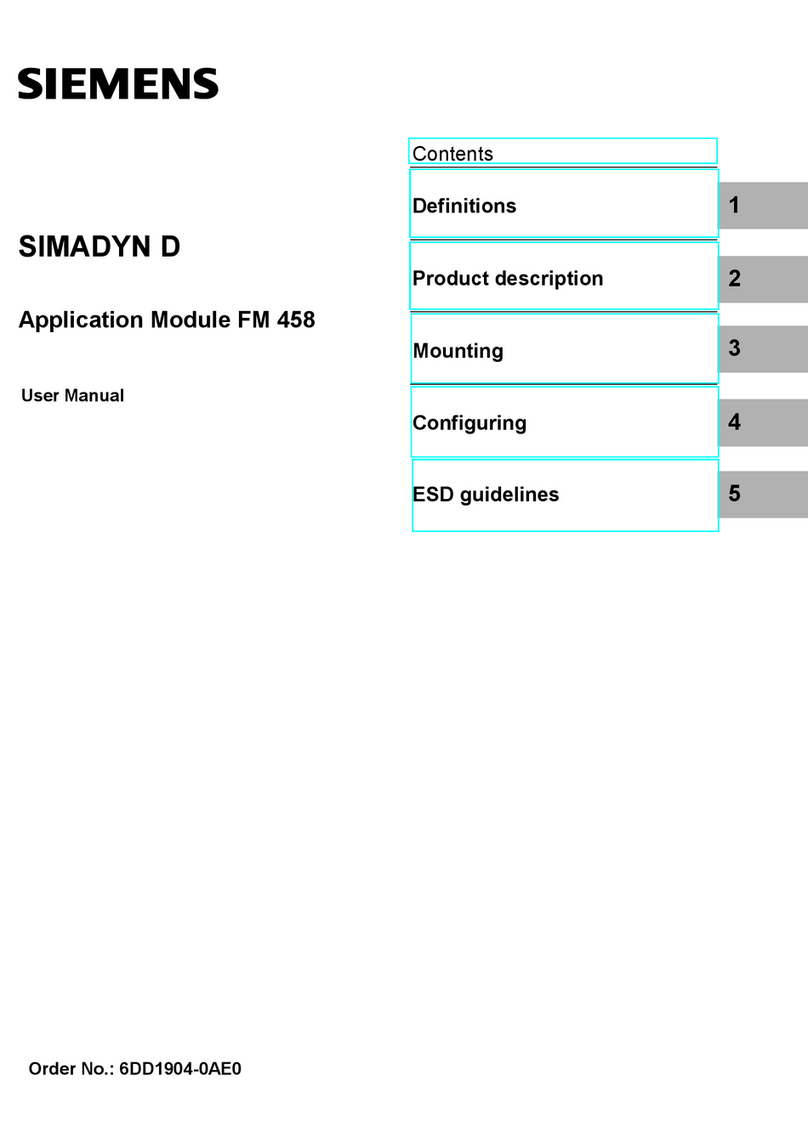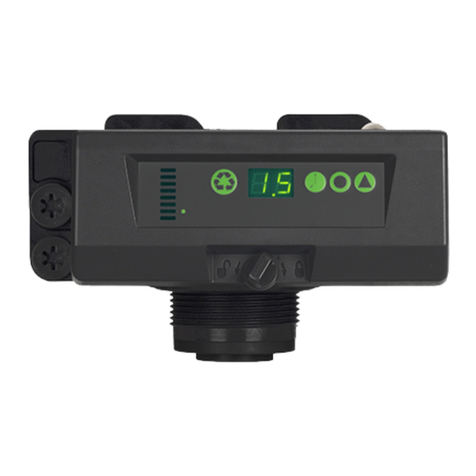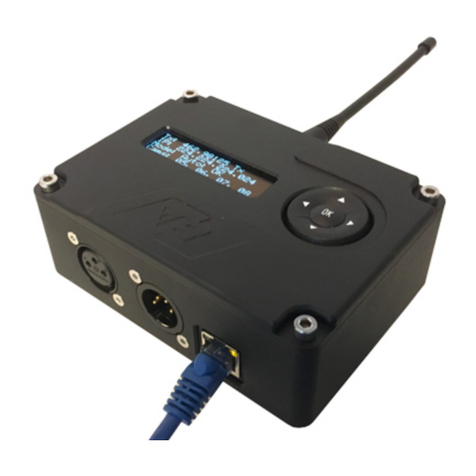Hirschmann PRS 80 User manual

www.hirschmann.com
P/N 031-300-190-183 Rev.D 11/08/10
PRS 80
OPERATOR’S / SERVICE MANUAL


Operator’s/Service Manual PRS80
© Hirschmann PRS80 REV. D 11/08/10 190183_D.DOC
NOTICE
Hirschmann makes no warranty of any kind with regard to this material, including, but not limited to,
the implied warranties of merchantability and/or its fitness for a particular purpose.
Hirschmann will not be liable for errors contained in this manual or for incidental or consequential
damages in connection with the furnishing, performance, or use of this manual. This document
contains proprietary information, which is protected by copyright, and all rights are reserved.
No part of this document may be photocopied, reproduced, or translated to another language without
the prior written consent of Hirschmann.
Hirschmann reserves proprietary rights to all drawings, photos and the data contained therein. The
drawings, photos and data are confidential and cannot be used or reproduced without the written
consent of Hirschmann. The drawings and/or photos are subject to technical modification without prior
notice.
All information in this document is subject to change without notice.
MANUAL REVISIONS
REV DATE NAME DESCRIPTION
- 10/4/04 CSH ECN 2004-152
A 06/17/05 SB ECN 2005-109
B 08/19/05 SB ECN 2005-150
C 09/26/05 SB ECN 2005-154
D 11/08/10 JM ECN 2010-138
© 2005 Hirschmann, Chambersburg, PA 17201, USA


Operator’s/Service Manual PRS80
© Hirschmann PRS80 REV. D 11/08/10 190183_D.DOC
TABLE OF CONTENTS
1GENERAL INFORMATION.............................................................................................................7
2WARNINGS .................................................................................................................................... 7
3FEATURES..................................................................................................................................... 8
4SYSTEM DESCRIPTION................................................................................................................ 8
4.1 OPERATING CONSOLE ................................................................................................................... 8
4.1.1 Liquid Crystal Display...........................................................................................................................8
4.1.2 Control Identification.............................................................................................................................9
5SYSTEM OPERATION................................................................................................................. 10
5.1 MENU'S..................................................................................................................................... 11
5.2 MENU SELECTION INSTRUCTIONS ................................................................................................ 11
5.3 LOAD .......................................................................................................................................... 12
5.3.1 Load Display.......................................................................................................................................12
5.3.2 Tare Function......................................................................................................................................13
5.3.3 Limits...................................................................................................................................................13
5.4 A2B............................................................................................................................................ 15
5.4.1 A2B display.........................................................................................................................................15
5.4.2 A2B limit..............................................................................................................................................15
5.4.3 Pre-Operation Inspection....................................................................................................................16
5.5 WIND .......................................................................................................................................... 19
5.5.1 Display................................................................................................................................................19
5.5.2 LIMITS ................................................................................................................................................19
5.6 ANGLE ........................................................................................................................................ 20
5.6.1 Operation............................................................................................................................................20
5.6.2 Limits...................................................................................................................................................20
6INSTALLATION AND SETUP....................................................................................................... 21
6.1 CONSOLE MOUNTING .................................................................................................................. 21
6.2 WIRING....................................................................................................................................... 22
6.3 ADDING SENSORS........................................................................................................................ 23
6.4 REPEATER .................................................................................................................................. 24
6.5 LOAD .......................................................................................................................................... 24
6.5.1 Load cell Installation...........................................................................................................................24
6.5.2 Load Cell Setup and Calibration.........................................................................................................25
6.5.3 Accuracy and Test Requirements ......................................................................................................27
6.6 A2B............................................................................................................................................ 28
6.6.1 Transmitter / Switch............................................................................................................................28
6.6.2 Transmitter LED..................................................................................................................................28
6.6.3 Travel position (optional) ....................................................................................................................28
6.6.4 Transmitter/Switch installation............................................................................................................29
6.7 WIND .......................................................................................................................................... 30
6.8 ANGLE ........................................................................................................................................ 31
6.8.1 Angle Installation, Setup, Calibration..................................................................................................31
6.8.2 Accuracy and Test Requirements ......................................................................................................34
7SERVICE / TROUBLESHOOTING ............................................................................................... 35
7.1 SCREENS.................................................................................................................................... 36
7.2 DIAGNOSTICS.............................................................................................................................. 36
7.2.1 To Test the Display:............................................................................................................................36
7.2.2 To Test the buttons:............................................................................................................................37
7.2.3 To Test the outputs:............................................................................................................................37
7.3 TROUBLESHOOTING .............................................................................................................. 39
8MAINTENANCE............................................................................................................................ 40
8.1 BATTERY REPLACEMENT ............................................................................................................. 40
9PART NUMBERS.......................................................................................................................... 41


Service and Maintenance 7
1 GENERAL INFORMATION
The PAT Telemetry Receiver System has been designed to provide indication from various types of
sensors, i.e. A2B, Load, Wind and Angle.
The A2B system will warn the crane operator of a two-blocking condition of the crane. If a two-blocking
condition is approached, the system will warn the operator by sounding an audible alarm, flashing the
backlit LCD and locking out those functions which may aggravate the crane's condition, whenever
applicable.
If the system is set up for load, angle or wind, limits can be set by the user. When these limits are
exceeded the system will warn the operator by sounding an audible alarm, flashing the backlit LCD
and de-energize the lockout relay.
The system relay can be connected to the cranes lockout system. If so, the system will lock out when
exceeding any of the user limits.
NOTE: The term "two-block" is a crane term that refers to a condition when the load handling device
comes in contact with the boom head. This condition, if not prevented, may cause the wire rope to
break, allowing the load to fall. Either raising the load into the boom head, or telescoping the boom out
without paying attention to the hoist line can cause a "two- block" condition.
2 WARNINGS
The PAT Telemetry Receiver System is an operational aid, which warns a crane operator of
approaching two-block conditions, which could cause damage to equipment and personal injury.
This device is not, and must not be a substitute for good, sound operator judgment, experience and
use of accepted safe crane operating procedures.
The responsibility for the safe operation of the crane remains with the crane operator who must ensure
that all warnings and instructions supplied are fully understood and observed.
Prior to operating the crane, the operator must carefully and thoroughly read and understand the
information in this manual to ensure that the operation and limitations of the system and the crane are
known.
The system can only work correctly, if all sensors/transmitters have been properly set. For
correct setup, the operator has to answer thoroughly and correctly all questions asked
during the setup procedure in accordance with the real rigging state of the crane. To prevent
material damage and serious or even fatal accidents, the correct adjustment of the system
has to be ensured before starting the crane operation.
Always refer to operational instructions and load charts provided by the crane manufacturer
for specific crane operation and load limits.
© Hirschmann PRS80 REV. D 11/08/10 190183_D.DOC

Operator’s Manual PRS 808
3 FEATURES
The PAT Telemetry Receiver has the following features:
•Easily and clearly shows the operator required information.
•Multi language. The system can be setup to display text in both English and Spanish.
•Multiple limits can be set.
•Wireless operation.
•Minimum of 500 feet LOS.
•Frequency Hopping Spread Spectrum transceivers
•Can display in multiple units.
•Built in lockout relay. Rated at 2 amps
•Analog display of % of limit on load cells and wind speed.
•Tare function.
•Low battery indication.
•Expandable
4 SYSTEM DESCRIPTION
4.1 Operating Console
The console has 2 functions:
•Accepts inputs from the crane operator (reeving, limits and setup)
•Displays important data and information from the sensors
The operator’s console should be mounted in the operator’s field of vision.
4.1.1 Liquid Crystal Display
The Liquid Crystal Display (LCD) used in the PAT Telemetry Receiver console is a wide temperature-
range graphic display with transflective characteristics that give it a high visibility in sunlight and during
backlit night operation. Due to the nature of any LCD, it works on the principle of polarization of light. It
should be noted that dual polarizations that are at a certain angle to each other can reduce the
amount of light up to completely eliminating it if that angle becomes perpendicular. This can have
significance if the operator is wearing polarized sunglasses that happen to be perpendicularly
polarized in relation to the LCD’s polarization. In this rare case, the operator has to work without
sunglasses or find different sunglasses that do not have this characteristic, in order to avoid having the
visibility of the display impaired.
The LCD contains an automatic temperature compensation that will adjust the LCD’s contrast
according to the surrounding temperature.
© Hirschmann PRS80 REV. C 09/26/05 190183_D.DOC

Service and Maintenance 9
4.1.2 Control Identification
This unit contains a display and different controls that are described as follows:
Fig 2: Operator’s Console
1. LCD
2. Clear button
3. Select button
4. Up Button
5. Down Button
Button “SCROLL UP”
•Use this button to increase values or to scroll up.
•Changes which sensors are displayed and how each is displayed.
Button "SCROLL DOWN"
•Use this button to decrease values or to scroll down.
•Changes which sensors are displayed and how each is displayed
Button "SELECT"
•Use this button to enter the menu screen and to confirm selections.
© Hirschmann PRS80 REV. D 11/08/10 190183_D.DOC

Operator’s Manual PRS 8010
Button "C"
•Generally used to back out of a selection and return to the previous
screen.
•While pushing this button, the control lever lockout function of the
system can be deactivated.
•Accesses the Tare function
Since button C can deactivate the lockout function of the system, the following instructions
must be obeyed:
•The by-pass function shall be used with discretion, as unwarranted use of it to override
the control lever lockout system can result in harm to the crane and danger to property
and persons.
•Never use the by-pass function to either overload or operate the crane in a non-
permissible range.
5 SYSTEM OPERATION
Upon switching on crane ignition switch, the system starts with an automatic test of the system, of
lamps and audible alarm. During the test, the LC display shows the console and system software
version.
The TR setup procedure allows the operator to input the sensors being used and the limits for the
sensors. The operator must complete the setup procedure for each sensor.
On several screens, icons are used to represent the sensor. Here are the icons used in the system.
First installed A2B switch
Second installed A2B switch Load sensor
Wind Speed Sensor Reeving #
© Hirschmann PRS80 REV. C 09/26/05 190183_D.DOC

Service and Maintenance 11
5.1 MENU'S
REEVING
LIMITS
SETUP
♦SENSORS
A2B 1
A2B 2
LOAD 1
LOAD 2
WIND SPD
ANGLE 1
ANGLE 2
For each sensor:
INSTALL NEW
UNINSTALL
ENABLE / DISABLE
♦CALIBATIONS
•LOADCELL 1
•LOADCELL 2
◊For each loadcell:
◊ZERO POINT
◊SENSOR TYPE
♥7.5 TON MAX
♥22.5 TON MAX
♦SCREEN/BEEPER
UNITS
•LBS - MPH
•KG - KPH
LANGUAGE
PCT BAR IS ON/OFF
WARNING ARE ON/OFF
♦DIAGNOSTICS
SCREEN
KEYPAD
OUTPUTS
ALARM LOG
COMM DATA
LOW BATTERIES (This will only be shown if a low battery condition exists)
ABOUT
5.2 Menu Selection Instructions
From the operating screen, press to enter the menu selection.
Use the up and down to scroll through and high light your selection then press to
make the selection.
© Hirschmann PRS80 REV. D 11/08/10 190183_D.DOC

Operator’s Manual PRS 8012
5.3 Load
When set up with a load cell, the last selected display and configuration will be shown and must only
be confirmed if that configuration setup equals the crane’s actual configuration. Otherwise the reeving
must be changed to match the current configuration.
The load cell can be installed into a single part line configuration or into a multipart line configuration.
When a multiple parts are used, the system multiplies the force from the load cell by the parts of line
selected on the console. This is why it is imperative that the correct parts of line (reeving) is selected
on the console.
5.3.1 Load Display
When a load cell has been installed, the option is available to display the on hook load.
The load cell must be installed in the dead end of the load line.
If additional sensors are installed, optional screens can be selected. Some showing one of the
sensors only and some showing multiple sensors at once. The combination of displayed sensors can
be selected by pressing the arrow buttons while on the working screen.
Set the console to match the crane hoist reeving.
Use the up down arrows to adjust the reeving.
The correct setting of the reeving is of utmost importance for the proper functioning of the
system. Therefore, only operators who are thoroughly familiar with the operation of the
system should perform the setting of the system. The system will only measure the load on
hook and will not measure the effect of any other attachments.
© Hirschmann PRS80 REV. C 09/26/05 190183_D.DOC

Service and Maintenance
13
The console will now display the on hook load display. REEVING
LOAD
PERCENT OF LIMIT
There are several options for selecting which values are shown on the display and multiple ways in
which the data can be displayed. To change the data that is displayed, use the up and down arrows.
The up arrow cycles thru the available displays. These options change for different combinations of
sensors. If the display does not change, there is no option available for this combination.
5.3.2 Tare Function
The tare function is activated by pressing the button. “t” will flash beside the load display while
the tare function is active. The tare function is deactivated after 30 seconds if no other buttons
are pressed.
5.3.3 Limits
Load limits can be easily set thru the setup menu. When a limit is set, the limit may be shown on the
bottom portion of the screen. What is shown depends on the user preferences. The screen can show
an icon representing the sensor for which the limit is set or it can be in the form of an analog bar.
When a limit is exceeded the limit icon will flash and the lockout relay will disengage.
5.3.3.A SETTING LIMITS
To set limit
Press . Scroll to select LIMITS. Scroll to select your sensor.
Only installed devices can be selected for limits.
Two types of limits can be set for the load cell. Max linepull and max total load. Both will limit the
maximum capacity. To set the maximum limit of the load, select LOADCELL 2. To set a limit on the
maximum permissible line pull, select LINE PULL 2 from the menu. This will give a limit based on the
current reeving of the hook block.
© Hirschmann PRS80 REV. D 11/08/10 190183_D.DOC

Operator’s Manual PRS 8014
Note: a prewarning can be set so as to beep the alarm when a limit is approached but not reached.
This is set with the warning option. Menu- SETUP/ SCREEN/BEEPER/ WARNING.
Enter the value for the limit. Use the arrows to change values. Use the to change move to
the next digit. Note the last 2 digits are fixed on the load cell and can not be changed.
If the system is turned off, all setup and limits remain stored. When turning the system on again these
adjustments can be acknowledged by merely confirming the reeving and pressing the SELECT button
(provided that the crane configuration has not been modified!).
© Hirschmann PRS80 REV. C 09/26/05 190183_D.DOC

Service and Maintenance 15
5.4 A2B
5.4.1 A2B display
When an A2B switch has been installed, the status of the switch is always shown. There are several
options for displaying the status. If other sensors are installed besides the A2B, the A2B status will be
shown as an icon.
A2B alone
A2B with other sensor.
5.4.2 A2B limit
When the A2B limit is exceeded, the relay will disengage. The display will flash and show the A2B
icon. The audible alarm will sound. The limit for the A2B is fixed by the chain length and can not be
altered.
A2B warning.
© Hirschmann PRS80 REV. D 11/08/10 190183_D.DOC

Operator’s Manual PRS 8016
5.4.3 Pre-Operation Inspection
Before operating the crane, the following electrical connections must be checked to ensure that the
system is properly connected for the crane configuration.
With even parts of hoisting line, the weight shall be attached to the dead-end line. With odd parts of
hoisting line, the weight shall be attached to the line of lowest speed.
A separate A2B weight and transmitter must be used for each hoist that is in use. The Retainer flag, if
equipped, must be removed from each switch that is in use. Switches that are not in use should either
be removed from the system or must have the retainer flag installed.
Anti-Two-Block Retainers (optional)
Installation of Anti Two-Block Retainer in Locking Position Procedure (see Fig. 1 and 2):
1. Pull the cable out of the switch and bend back parallel to the boom and hold (1).
2. Slide the retainer from left side with its slot over the cable between the crimped stop and the switch
(2). Push it firmly straight onto the cable guide of the Anti Two-Block switch (3).
Fig. 1: Setting of Anti Two-Block Retainer in Locking
Position Fig. 2: Retainer in Locking Position
3. Straighten the cable completely into the slot and release the cable (4).
4. Turn the flag of the retainer for best visibility for the operator (5).
© Hirschmann PRS80 REV. C 09/26/05 190183_D.DOC

Service and Maintenance 17
Removal and Storage of the Anti Two-Block Retainer Procedure (see Fig. 3 and 4):
1. Pull the cable out of the switch (1) and bend back parallel to the boom and hold (2).
2. Move the retainer down (3) and then left (4) to remove it from the Anti Two-Block switch. Release
the cable. A lanyard is supplied to connect flag to A2B mounting plate.
Fig. 3: Removal of the Anti Two-Block Retainer
After the electrical connections have been checked to insure that the system is properly connected for
the crane configuration, the following checks shall be made:
1. Check the electrical wiring connecting the various parts of the system for physical damage.
2. Check the anti two-block switches and weights for free movement.
The following tests shall be performed with care to prevent damage to the machine or injury
to personnel. Proper functioning of the system requires successful completion of these
tests before operating the machine.
If the operator cannot see the load-handling device approaching the boom nose, he shall have an
assistant (signal person) watch the load-handling device. The operator shall be prepared to stop the
machine immediately should the system not function properly as indicated by flashing the warning
symbol, sounding the audible alarm and locking the crane movements, hoist up, telescope out and
boom down. ( if lockout is installed)
3. Check the anti two-block alarm by performing one of the following tests:
oBy manually lifting the weight attached to the anti two-block switches. When the weight is lifted,
the audible alarm should sound, the anti two-block alarm display should flash.
oSlowly raise the main boom load-handling device to create a potential two-block condition.
When the load-handling device lifts the weight, the audible alarm should sound, the anti two-
block alarm display should flash and the motion of the load-handling device should be stopped.
Lower the load-handling device slightly to eliminate this condition.
oSlowly lower the boom to create a potential two-block condition. When the load-handling
device lifts the weight, the audible alarm should sound, the anti two-block display should flash
© Hirschmann PRS80 REV. D 11/08/10 190183_D.DOC

Operator’s Manual PRS 8018
and the boom lowering function should be stopped. Lower the load-handling device slightly to
eliminate this condition.
If the A2B warning symbol fails to flash and audible alarm does not function as described
and the crane movements are not stopped, the system is not working properly. The
malfunction shall be corrected before operating the crane.
4. If the crane is equipped with a boom extension, repeat the test procedure for the boom extension
anti two-block switch.
© Hirschmann PRS80 REV. C 09/26/05 190183_D.DOC

Service and Maintenance
19
5.5 Wind
5.5.1 Display
The wind speed can be shown by itself on the screen or if in combination with other sensors, as an
icon on the bottom of the screen.
PEAK VALUE
CURRENT WIND SPEED
UNITS
% of LIMIT
The speed can be shown in miles per hour, or kilometers per hour.
When the wind speed is displayed by itself, the peak speed is also shown. The peak will be the
highest wind speed recorded since the system was started. When the system is turned off the peak
value will be reset. The peak value can also be reset by pressing the button.
The % of limit is shown at the bottom.
5.5.2 LIMITS
The system sets the default speed limit to 30 mph. This is represented in by the bargraph. The
bargraph shows the % of the limit that is set. The limit can be set to other values.
To change the default limit, press , then select the sensor for the limit that you want to set.
Use the arrows to change the value. Use the to confirm the values.
Note: a prewarning can be set so as to beep the alarm when a limit is approached but not reached.
This is set with the warning option. Menu- SETUP/ SCREEN/BEEPER/ WARNING.
© Hirschmann PRS80 REV. D 11/08/10 190183_D.DOC

Operator’s Manual PRS 8020
5.6 Angle
5.6.1 Operation
When an angle sensor is installed either with radio or hardwired the function of the console is the
same. The angle is displayed in tenths of a degree. When other sensors are installed, they can be
shown on other screens. These screens can be accessed with the up down arrows.
5.6.2 Limits
The limits are set by selecting
SETUP/ LIMITS/ ANGLE
There is then the choice to set the minimum angle limit or the maximum angle limit.
To set the limit:
•Select the desired limit to set.
•Move the boom to desired angle.
•Press enter.
The angle limits can be cleared without moving the boom to the desired angle. To clear the angle limit
without booming to the angle:
SETUP/ LIMITS/ ANGLE/MINIMUM
Press and hold the down arrow, . The limits will change to -5 degrees.
SETUP/ LIMITS/ ANGLE/MAXIMUM
Press and hold the up arrow, . The limits will change to 90 degrees.
© Hirschmann PRS80 REV. C 09/26/05 190183_D.DOC
Table of contents
Other Hirschmann Control Unit manuals
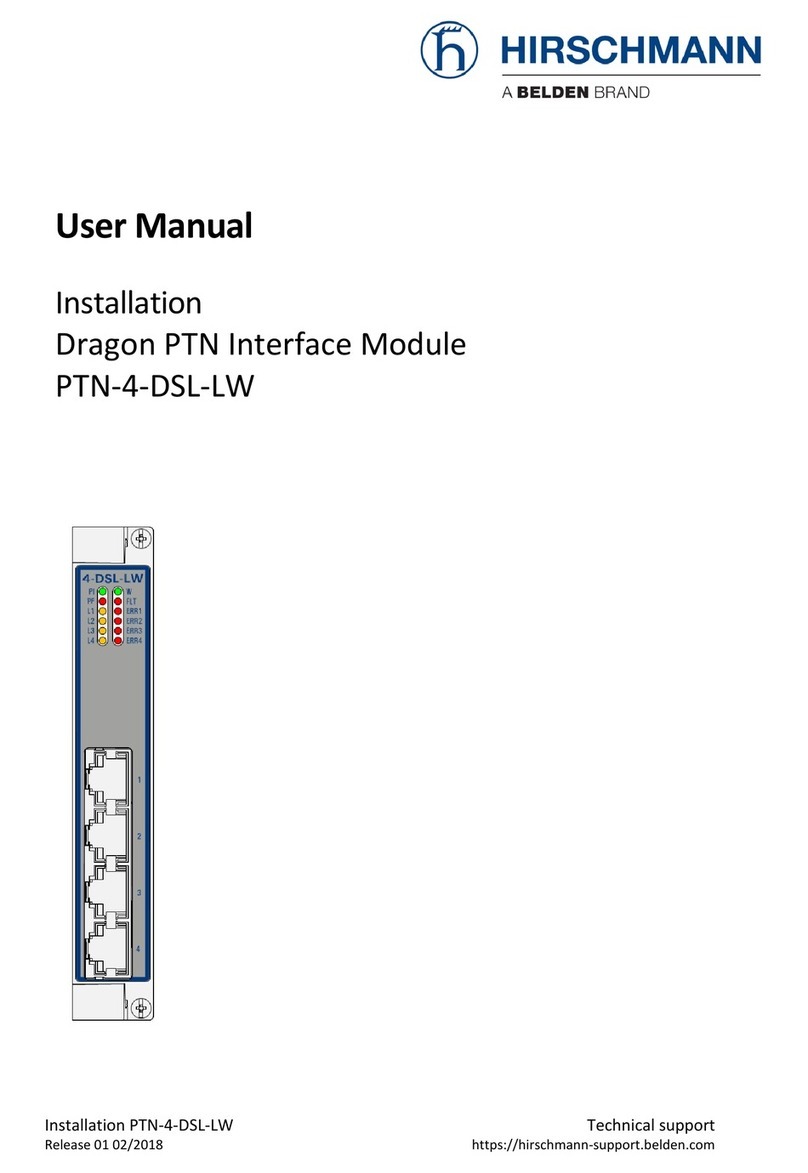
Hirschmann
Hirschmann PTN-4-DSL-LW User manual
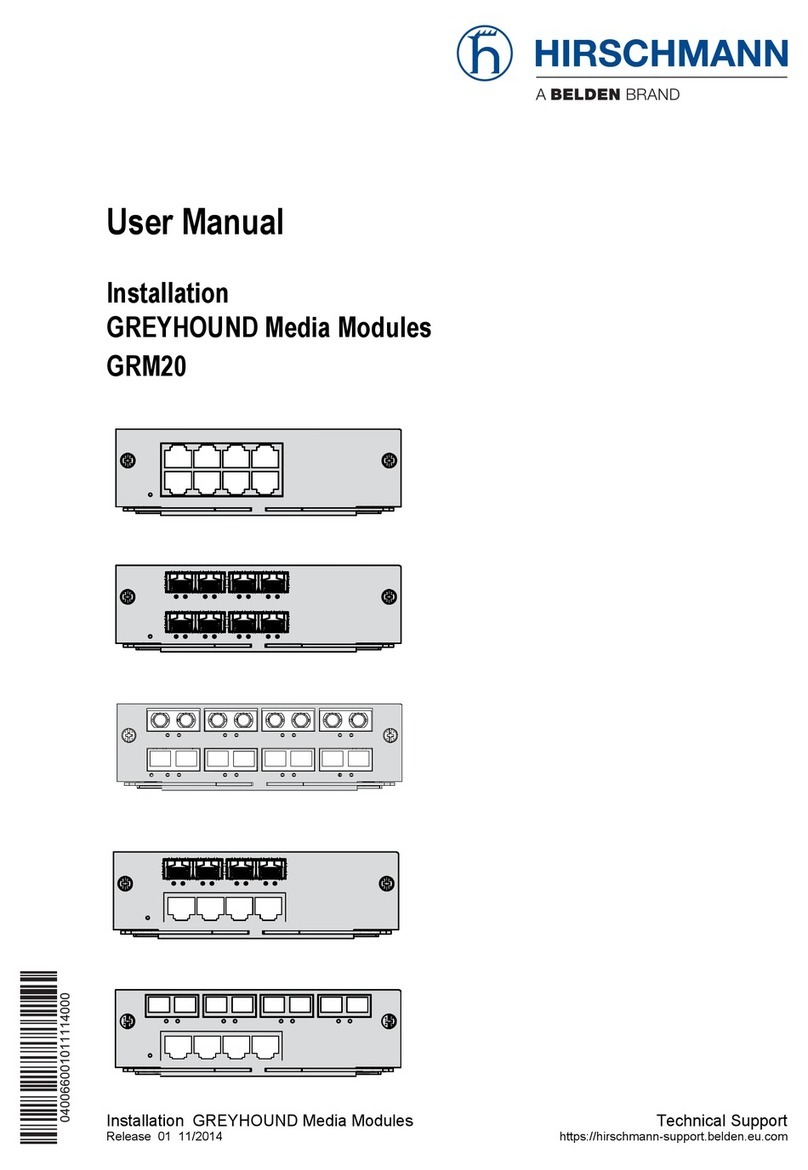
Hirschmann
Hirschmann GREYHOUND GRM20 User manual
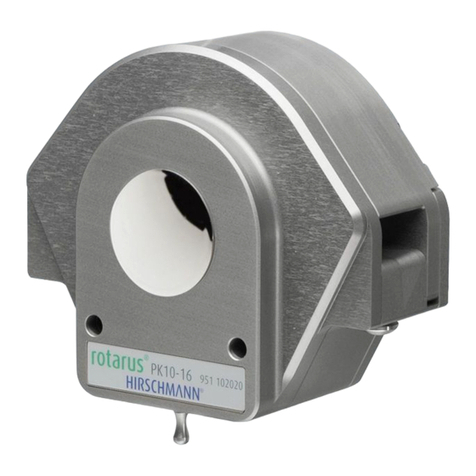
Hirschmann
Hirschmann Rotarus PK 10-16 User manual

Hirschmann
Hirschmann Dragon PTN Series User manual

Hirschmann
Hirschmann qSCALE i2 User manual
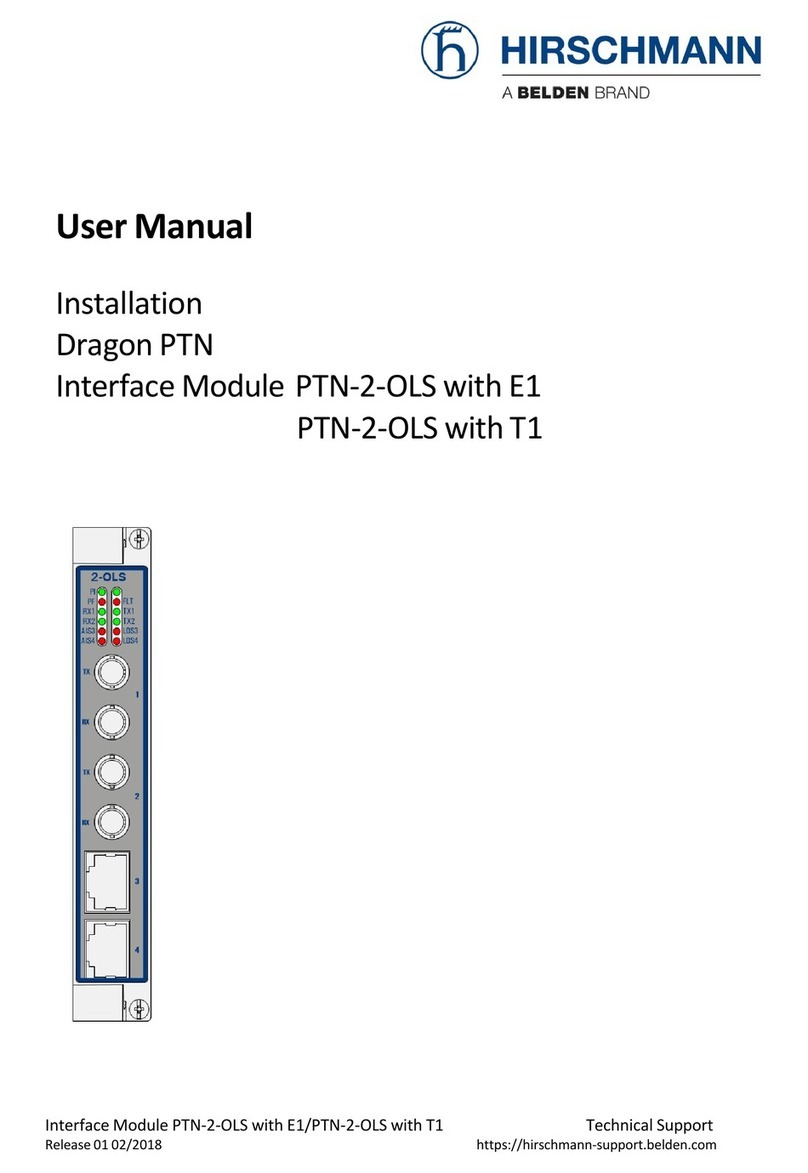
Hirschmann
Hirschmann Dragon PTN Series User manual

Hirschmann
Hirschmann Dragon PTN-6-GE-L User manual
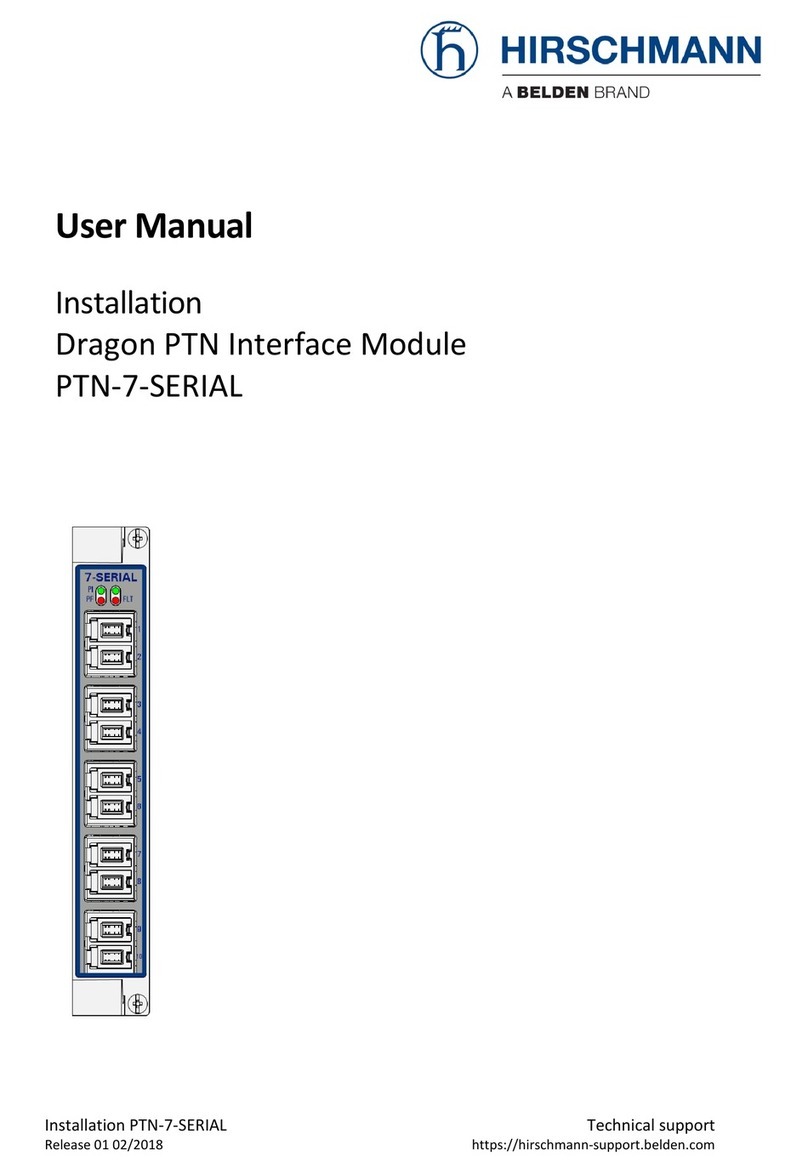
Hirschmann
Hirschmann PTN-7-SERIAL User manual
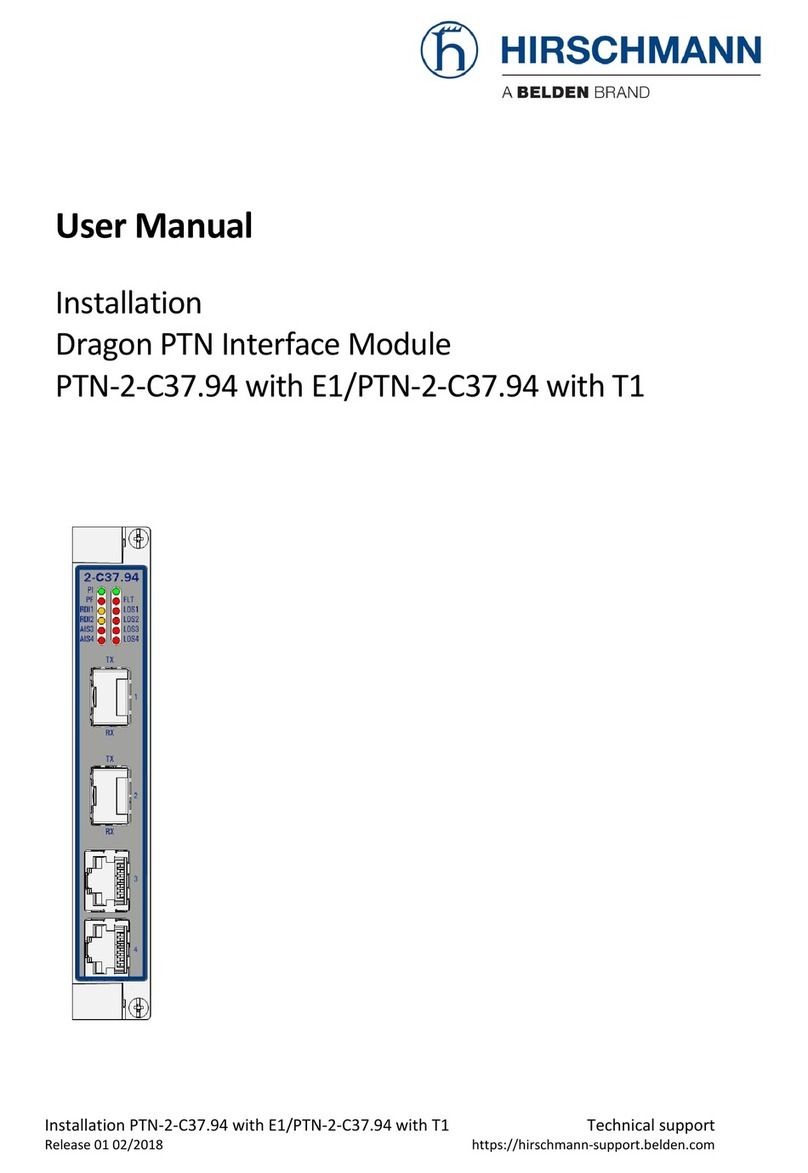
Hirschmann
Hirschmann PTN-2-C37.94 User manual
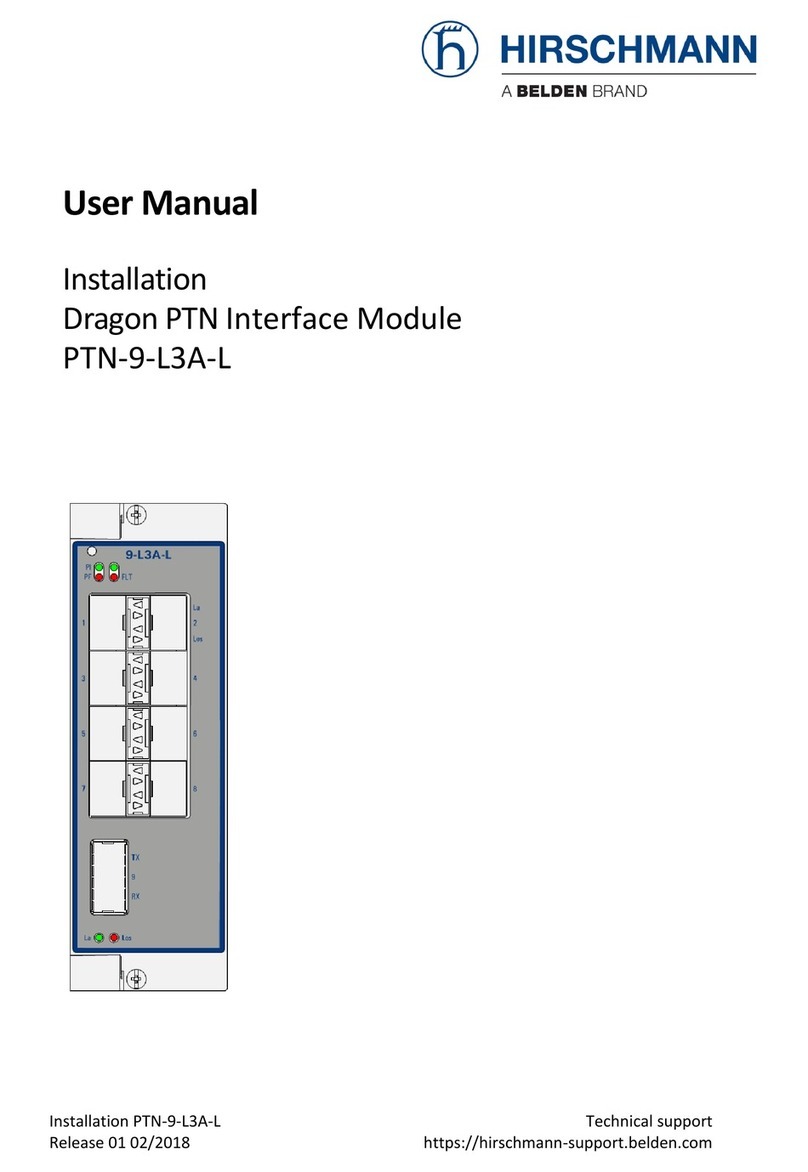
Hirschmann
Hirschmann Dragon PTN-9-L3A-L User manual



